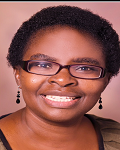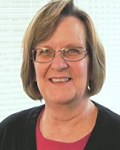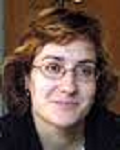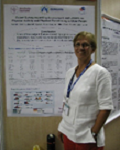Day 1 :
Keynote Forum
Cathy Rodgers Ward
UCLA Medical Center, Los Angeles, USA
Keynote: Small geographic nursing teams improve teamwork and patient outcomes
Time : 08:50-09:20

Biography:
Cathy Rodgers Ward, PhD, RN, NEA-BC is an experienced nurse executive and researcher and was most recently the Chief Nursing Officer for the past 18 years at the UCLA Medical Center in Los Angeles, California, designated three times as a Magnet facility. Dr. Ward also holds an appointment as clinical faculty in the UCLA School of Nursing. Her research has focused on the effects of nursing leadership on patient outcomes in hospitalized patients. Under Dr. Ward’s direction, UCLA achieved high patient satisfaction with overall quality of care ranking above the 90th percentile nationally and nurse satisfaction ranked above the 95th percentile. Dr. Ward has received many awards including the 2017 UCLA Leadership Award, 2015 Distinguished Alumni Award from the University of Alabama in Birmingham, the 2015 Transformational Leadership Award at UCLA, and the United States 2011 Nurseweek National Management Nurse of the Year.
Abstract:
Statement of the Problem: The implementation of healthcare reform requires new innovative nursing care models. Smaller work teams have been shown to increase teamwork in nursing. Smaller work teams provide for increased communication and accountability, closer supervision, better support for new staff, and increased knowledge of the patient condition. This study examines the effect of an innovative care team model using smaller, geographic work teams on patient outcomes, continuity of care and teamwork. Methods and Theoretical Orientation: This study was conducted on three hospital units in an academic medical center. Nurses in these units were divided into equal teams with equal bed counts. Nurses were assigned to one team and one geographic area only. Success of the model was assessed after one year including clinical outcomes, patient satisfaction, nurse continuity and nurse teamwork. Results: Nurse continuity improved in all units as evidenced by the average number of new RN encounters (including day and night shifts) decreased from 4.49 per patient to 3.94 per patient. The percent of team intactness was 87.4% indicating the model was successfully followed. Patient length of stay (LOS) in the hospital decreased across units by 14% therefore reducing overall costs. Patient satisfaction scores were variable across units. Satisfaction with nursing teamwork and nursing trust mean scores improved significantly (p=.04) across units. Conclusions and Significance: Developing smaller, more cohesive teams yields benefits of improved continuity of care for patients and improved patient outcomes. Improved continuity of care for patients may lead to safer care and improved engagement for nurses. Defining smaller work teams in a distinct geographic area is a model that shows promising results in developing teamwork among nurses and improving patient care.
Keynote Forum
Joanne P Robinson
Rutgers University, USA
Keynote: Findings from a decade of research on the lower urinary tract symptom experience in men with Parkinson’s disease and their spouse caregivers
Time : 09:20-09:50

Biography:
Joanne P. Robinson is a University Professor at Rutgers, The State University of New Jersey, USA. Dr. Robinson is known for her contributions to gerontological and urologic nursing. Her research on lower urinary tract symptoms in older adults has been supported by the USA’s National Institute of Nursing Research, recognized with six awards, and merited appointment to the board of the Center for Clinical Investigation of the Wound Ostomy and Continence Nursing Society (2011-2015). Currently, she chairs the Nursing Education Subcommittee of the International Continence Society. Dr. Robinson has been a Fellow of the American Academy of Nursing since 2011.
Abstract:
Problem Statement: Lower urinary tract symptoms (LUTS) are an important but often neglected issue in patients with Parkinson’s disease (PD). The purpose of this presentation is to highlight findings from a series of studies conducted over the past decade that expand evidence about the prevalence and impact of LUTS in male PD patients and their spouse caregivers. Theory and Methods: Guided by the Theory of Unpleasant Symptoms and family systems theory, four studies were conducted. All participants were recruited from the movement disorders clinic of a Veterans Affairs Medical Center. Study designs were: retrospective with total population sampling (N=271 clinic records); cross-sectional with convenience sampling (N=88 men with PD and LUTS); and qualitative descriptive with purposive sampling of cross-sectional study participants (N=11) and their spouses (N=15). Data from clinic records and interviews (structured and semi-structured) were analyzed using statistical procedures and content analysis (directed and conventional). Findings: Most patient participants had mild PD symptoms, yet UI prevalence was 24% and 92% in retrospective and cross-sectional studies respectively. Patients had limited awareness of the neurologic contributions of PD to LUTS. Embarrassment, bother, and diminished self-esteem jeopardized their relationships, intimacy, social life, and travel. Spouses understood that PD caused LUTS and empathized with their husbands; however, they still experienced bother and emotional distress related to LUTS and coped primarily by “dealing with it.” Patients and spouses relied mostly on do-it-yourself strategies to manage LUTS – some ingenious and some ill-advised. Conclusions: LUTS may be highly prevalent in the early symptomatic phase of PD, negatively affects patients and families, and often escapes the attention of providers. We recommend: screening patients and families for LUTS issues in all stages of PD; inquiring about burden and management strategies; and referring to urology providers as needed. LUTS treatment deserves designation as a priority area for PD research.
Keynote Forum
Anthony DeNino
CORe – Creating Our Reality, Inc., USA
Keynote: Utilizing positive psychology and kaizen in today’s healthcare setting
Time : 09:00-09:30

Biography:
ANTHONY DENINO is a Workshop Facilitator, Keynote Speaker and Consultant. Known as “The SMART Guy” – Success Means Acquiring Right Thoughts - Anthony DeNino is the Founder and President of CORe – Creating Our Reality, Inc. He is a person who believes that a positive attitude and living in a state of gratitude for all we do have, are the keys to a truly happy and impactful life. Through his Creating Our Reality motivational talks, he feels we all have the ability to achieve our goals in life…then exceed them. He customizes ALL of his speaking engagements and training/workshops based on client needs, that allows him to formulate THE BEST way to help them succeed.
Abstract:
Statement of the problem: With patients facing a myriad of disease and disease states, it is understandable for them to relay negative thoughts and tendencies in their discussions with nurses, and healthcare providers as a whole. And while nurses have long been at the forefront of supporting, healing, and keeping their patients in the right frame of mind as they strive to reach their healthcare goals, there are two thought processes that are becoming more prevalent in today’s society: 1) Positive Psychology; and 2) Kaizen. Each process is supported by extensive research and will be discussed in-depth during this presentation. The speaker will dive deeply into the meaning of each topic, utilize medical and psychological studies, and show how each can improve not only the emotional outcome of the patient, but the physical outcome as well. He will explain why people including Dr. Martin Seligman, Barbara Fredrickson Ph.D. and Masaaki Imai have been at the forefront of these areas for decades and what their work means. He will discuss how healthcare facilities, such as the Children's’ Medical Center in Dallas, TX, utilizes the Kaizen method and what the implementation of practicing Positive Psychology can do for any patient.
Keynote Forum
Leah Adeline Phillips
College of Licensed Practical Nurses of Alberta, Canada
Keynote: Building Capacity for Evidence-Based Practice: Understanding How Licensed Practical Nurses (LPNs) Source Knowledge
Time : ds

Biography:
Leah Adeline Phillips, PhD, Director of Research and Policy, College of Licensed Practical Nurses of Alberta, Canada. Dr. Leah Phillips is the Director of Research and Policy at the College of Licensed Practical Nurses of Alberta (CLPNA), an Adjunct Professor in the School of Public Health and the Faculty of Rehabilitation Medicine at the University of Alberta, Canada. She has a Bachelor of Arts (Honors) in Psychology; a Masters of Arts in Sociology, a Doctorate of Philosophy in Public Health Sciences and in 2017 completed a Fellowship for Health Systems Improvement. Dr. Phillips’ work supports the regulatory mandate for the Licensed Practical Nurse profession. Using best evidence to develop regulatory policy, Dr. Phillips strives to collaborate with researchers and innovation stakeholders to create knowledge on LPN practice, lead and facilitate research to support regulatory excellence, use the best empirical evidence to support and create evidence informed policy.
Abstract:
Statement of the Problem: In Canada, all nurses are required to engage in evidence-based practice (EBP) as an entry-to-practice competency; however, there is little research that examines Licensed Practical Nurses’ (LPNs’) information seeking behaviors or preferred sources of knowledge to conduct EBP. Due to the differences in education and roles of LPNs and Registered Nurses (RNs), it is both necessary and important to gain an understanding of how LPNs utilize evidence in their unique nursing practice. The purpose of this study was to investigate how LPNs source knowledge for their nursing practice.
Methods: A descriptive, cross-sectional survey of LPNs from Alberta, Canada asked participants to rank sources of knowledge that inform their practice. Responses were correlated with age and years of practice. Analysis of variance was used to determine if there were significant mean differences between average scores and place of employment.
Results: LPN participants used similar sources of knowledge as RNs. The top source of knowledge for both RNs and LPNs was the information they learn about each individual client and the least utilized sources of knowledge were articles published in nursing, medical, and research journals, tradition, and popular media. This finding is consistent with previous studies on RNs that found nurses do not often access current research evidence to inform their practice.
Conclusions: Since relatively few LPNs access nursing and research journals, it is important to tailor EBP education information to the workplace context. Future avenues of research might explore the potential of using in-services and webinars to disseminate information and skills training on EBP to the LPNs, as this was a popular source of practice knowledge.
Keynote Forum
Ann Hemingway
Bournemouth University, UK
Keynote: Life world Led Nursing Care: Could it help to Tackle Inequalities in Health?
Time : 10:00-10:30

Biography:
Professor Ann Hemingway is a registered nurse and professor of public health she is chair of the European Academy of Caring Science and a member of the Cochrane Collaboration Global Priorities in Nursing Review Group. Ann`s research is focused on the reduction of inequities in health and wellbeing through public health action. Ann is regularly commissioned to undertake international and UK based research projects. She is also a regular author in international journals with a specific focus on public health and the reduction of inequities in health and wellbeing.
Abstract:
Addressing health inequities and promoting wellbeing has been identified as an important area for nursing practice and research both in the UK and internationally, both within the nursing and health care literature and within national and international scrutiny and discussion documents. Nurses are critical as they act both as individual care co-ordinators and team leaders, nurses bring people centred care closer to the communities in which they are needed most. Indeed nurses may be members of deprived or marginalised communities and as such have intimate knowledge of the determinants of health in local areas. In addition nurses are often first to respond to emergencies and often provide care to under-served populations and communities around the world. Nurses can be engaged across the spectrum of public health interventions, this paper will outline how nurses can help to reduce inequalities and inequities in health and specifically outline the areas which nurses can help to tackle in relation to the social determinants of health for instance by targeting vulnerable populations to improve health outcomes and access to services.
This paper will explore the importance of nurses being able to ‘see’ via a first person perspective the life world of another being as caring insiders; as opposed to potentially adopting an objectifying, third person perspective. A philosophical underpinning for this practice will be presented, the life world perspective. The paper will suggest that although experienced practitioners may well be integrating this approach into their practice as we require the reduction of inequities in health to be a focus for nurses and nursing students working across hospital, the community and primary care internationally; we also need to offer a philosophical underpinning which helps build these approaches into nurses caring practice.
Keynote Forum
Geetha Jayaram
rsing and the Armstrong Institute for Patient Safety, USA
Keynote: The role of nurses in coordinating and implementing patient safety in psychiatry over 2 decades
Time : 09:30-10:00

Biography:
Dr. Geetha Jayaram is a senior faculty member in the Departments of Psychiatry, the School of Health Policy and Management, Global Health, and The Armstrong Institute for Patient Safety at Johns Hopkins University School of Medicine in Baltimore, Maryland. She directs a community psychiatry inpatient service, has directed several outpatient programs, and is an attending physician in the Department of Psychiatry at Johns Hopkins Hospital. She had a private practice for over 2 decades. As a highly respected clinician leader and administrator, she has developed and directed a quality assurance program that is unique in psychiatry.
Abstract:
Objectives:
- Apply science to nursing safety methods to evaluate them
- Utilize a systems perspective
- Minimize the impact of errors and maximize recovery in nursing practice.
Over the past two decades, safety climate research has been widely explored in other high reliability industries including railways, nuclear power plants, commercial aviation, manufacturing, and other industries. The first effort at identifying and outlining safety initiatives in psychiatry occurred through the cohesive efforts of the Patient Safety Committee of the American Psychiatric Association in 2002 and by the American Psychiatric Nursing Association in 2012. With regulatory bodies and insurance companies, emphasis on the safety movement in Psychiatry has focused on the psychiatrist/nursing interface. Safety failures causing sentinel events have repeatedly highlighted several areas: failure to train, thoroughly assess, communicate, monitor, & provide resources for patient protection, including a safe environment. Ways to avoid continuous observation and promote de-escalation will be discussed.
Among improvements made in this area are screening for and prevention of aggression, preventing inpatient suicide, providing the correct level of observation and instructing observers; preventing medication errors with medication reconciliation, detecting system flaws and preventing adverse events such as falls. Risk assessments by nurses as our frontline staff are of paramount importance. Methods and tools used to promote safety will be discussed and examples provided.
Overall, establishing a climate of safety and promoting a culture of safety with the involvement of leaders will be reviewed.
Panel Presentation on Diabetes and Vulnerable Populations (Time: 12:05-13:05)
Session Introduction
Carol Moffett
Arizona State University College of Nursing and Health Innovation, USA
Title: Perinatal Outcomes Associated with Fetal Sex and Screening Glucose Concentrations Measured Prior to 24 Weeks Gestation; Significant Effect with Girl Fetus

Biography:
Carol Moffertt has completed his PhD in 2007 from University of Arizona and postdoctoral work at National Institutes of Diabetes Digestive and Kidney Diseases. She is clinical faculty at Arizona State University. She is a fellow in the American Association of Nurse Practitioners.
Abstract:
This study identifies the relationship of fetal sex and early pregnancy (prior to 24 weeks gestation) screening using the oral glucose challenge test (OGCT) on four adverse pregnancy outcomes birth weight and the diagnoses of large for gestational age (LGA), cesarean delivery and pre-elcampsia/eclampsia in 2537 pregnant women. Women who delivered singleton births at Phoenix Indian Medical Center during 2000-2012 were identified from the electronic health record.
Boy babies represented 52% (n=1316) of the births. Linear and logistic regression models were used to describe the impact of the OGCT on the four adverse pregnancy outcomes. Associations of 1 hour plasma glucose (1hPG) with each clinical outcome were calculated for girl and boy babies. Odds ratios were calculated for the logistic models and increase in birth weight for the linear model for each 1 SD increase in 1hPG. The implications for girl and boy babies were also described.
We found that the pregnant women in this study who were Native Americans were obese (mean BMI=30.5 ±7.2 kg/m2) and at high risk for type 2 diabetes mellitus (T2DM) but had not been diagnosed prior to pregnancy. Average time of OGCT administration was 12.5± 4.7 weeks gestation and had mean OGCT plasma glucose values of 117.2±32.4 mg/dl. Maternal age was 25.5±5.6 years. We identified a significant interaction of pregnancies with girl fetuses and maternal glucose on adverse outcomes in all models except cesarean deliveries. Identifying hyperglycemia very early in pregnancy offers the opportunity to intervene and possibly affect better outcomes in these pregnancies.
Charlotte Thrall
Arizona State University, College of Nursing and Health Innovation, USA
Title: Implementation of Culturally Competent Educational Interventions for Adult Latinos with Type 2 Diabetes

Biography:
Charlotte Thrall completed her Doctor of Nursing Practice degree at Arizona State University (ASU). She is Clinical Assistant Professor and Family Nurse Practitioner Specialty Coordinator at ASU.
Abstract:
This project implemented a culturally modified diabetes education program to improve self-management and clinical outcomes of Latinos with Type 2 Diabetes.
Latinos, the fastest growing minority in the United States, are among the most affected populations by the diabetes epidemic. Disease intervention strategies focused on the unique factors of lifestyle, cultural beliefs, socioeconomic status, and access to health care, while presenting information in a manner congruent with the Latino culture. Chronic disease self-management is key in improving disease outcomes, and there is strong evidence in the literature supporting the benefits of culturally competent interventions to improve disease outcomes and self-management within Latino populations.
A pre and post study design utilizing the RE-AIM framework was used to obtain comparison data regarding outcomes of culturally competent interventions of Latino adults with Type 2 Diabetes, who were ages 18 through 64 years, could read and understand Spanish, and had a baseline glycosylated hemoglobin of 8.0% or higher (n=12). The Stanford Model for the Spanish Diabetes Self-management Program was adopted in Arizona by the Department of Health and Human Services, and was used for the educational intervention. Six weekly sessions, 2.5 hours each in length, were facilitated by 2 Community Health Workers (CHWs), one or both of whom have diabetes themselves. All sessions were presented in Spanish without translators, were highly interactive, and included selected family and friends.
Outcome data includes BMI, HbA1c, and patient satisfaction.
Project results align with literature, including decreases in HbA1c, while reflecting barriers to program implementation among this population. With understanding of possible barriers, Advanced Practice Nurses can utilize this educational intervention to improve diabetic patient outcomes in the Latino community.
Judith Ochieng
Arizona State University, College of Nursing and Health Innovation, USA
Title: Risk perception of developing diabetes complications among African American Women with type 2 diabetes

Biography:
Judith Ochieng has completed her PhD and DNP from The University of Arizona in 2015. She is Assistant clinical professor at Arizona State University teaching in DNP program. Judith is also practicing as a Family Nurse Practitioner as a contractor for the department of homeland security in Arizona.
Abstract:
This study describes the perceptions that African American (AA) women diagnosed with Type 2 diabetes mellitus (T2DM) have of their risks of developing DM complications and how their perceived risk of diabetes complications influences their diabetes (DM) self-management,
A qualitative descriptive study was used to provide a comprehensive description of the perception of risk for developing DM complications among AA women with T2DM. A purposive sample of ten (n =10) AA women with T2DM participated in the study.
Findings revealed that knowledge of T2DM influences the perception of risk of developing T2DM complications. The findings also revealed that risk perception for developing DM complications influenced DM self-management among AA women with T2DM. AA who perceived themselves to be at high risk reported taking appropriate actions to prevent or delay the onset of developing T2DM complications.
Results showed that risk perception is an important factor in DM self- management. Therefore, understanding risk perception of AA women with T2DM is a key to changing their health behavior and reducing their health risks related to T2DM. Understanding the attitudes and beliefs of AA women with T2DM regarding their risks for developing diabetes complications is a powerful tool for practitioner especially primary care providers who mange DM. Providers can use this information to provide individualized care that would help improve health outcomes and reduce health disparities among this population.
Sessions:
Nursing Education | Nursing Practice and Research | Types of Nursing | Family Nursing | Midwifery and Women Health Nursing | Nursing Care | Heart and Cardiovascular Nursing | Medicine | Emergency Nursing and Critical Care
Session Introduction
Marie T. O’Toole
Rutgers University, USA
Title: The language of health care
Time : 09:50-10:10

Biography:
There is no doubt that the language of health care is nuanced and can confuse as well as inform if one is not familiar with these nuances. Health care vocabularies fall into the category of a specialized language also known as a language for special purposes (LSP). Recently lexicographers are using a new term, Academic and Professional Languages. This new term refers to the type of language used by specific knowledge communities or groups of professionals, and the language of nursing best falls within this category. Academic and Professional Languages (APL) include the common language, or language that is used in all types of communication, but specific terms, or lexemes, from the common- or general language- often have a specialized meaning in an APL. There are also terms that are in a grey area between the general language and the APL that are used in both, with different meanings depending on context. Neither the broader language of health care, nor the language specific to the nursing profession, is unique as a scientific vocabulary. A large number of words in academic and professional language are derived from Latin and Greek but scientific language is supplemented by new words added as the science evolves and research adds to the body of knowledge. This presentation will highlight the language of healthcare used to describe innovations and advances in nursing and healthcare as represented in contemporary health care dictionaries.
Abstract:
Dr. Marie O’Toole’s primary program of research is academic lexicography. Dr. O'Toole has served as the editor of multiple editions of dictionaries and encyclopedias, including the award winning Mosby Dictionary of Medicine, Nursing and Health Professions. She continues to edit the Mosby series of dictionaries.
Dr. O’Toole has been involved in international outreach related to rehabilitation and curriculum development. Her work has been funded by the United States Agency for International Development (USAID), the Health Resource Services Administration (HRSA), the Fund for Improvement of Secondary Education (FIPSE) program of the United States Department of Education and the Erasmus+ program of the European Commission on Higher Education. In 2017 she served as a Fulbright Specialist in Jordan.
Dr. O’Toole is deeply committed to excellence in nursing education. Throughout her career she has been proactive in looking for sustainable opportunities to advance nursing education in an international, interdisciplinary and collaborative fashion. She was the Founding Chair of Nurses Overseas, a division of Health Volunteers Overseas (HVO). The nursing division provides an opportunity for nurse faculty to work with their colleagues in developing countries. Dr. O’Toole is a member of the 2003 Robert Wood Johnson Executive Nurse Fellow cohort. Her Fellow project focused on supporting transcultural expertise in undergraduate students. While serving as the Chair of Nazareth College her faculty received the Innovation Award for the establishment of a dual degree program with two schools in the European Union. She currently serves, with great pride, as the Senior Associate Dean at Rutgers, Camden School of Nursing.
In recognition of her work, Dr. O’Toole has garnered numerous awards including an honorary doctorate from Semmelweis University in Budapest, Hungary, the presidential “Call to Service Award” from the G.W. Bush Administration, and Fellowship in the American Academy of Nursing.
Susan Solecki
Drexel University, USA
Title: An exploratory study on parental monitoring of adolescent cell phone use
Time : 10:10-10:30

Biography:
Susan Solecki, Dr PH, MSN, FNP-BC, PPCNP-BC is an assistant clinical professor at Drexel University. Dr. Solecki is board certified as both a family and pediatric nurse practitioner by the American Nurses Credentialing Center (ANCC). Dr. Solecki has thirty-five years of varied experience as a clinician, mentor, and preceptor in the areas of pediatrics, women's health, adult health, and occupational health. Dr. Solecki maintains current clinical practice at an outpatient pediatric office in Philadelphia. Dr. Solecki has attained her doctorate in the DrPH Program in the School of Public Health at Drexel University with her research focusing on violence in the adolescent population.
Abstract:
Research shows that exposure to violence in the media contributes to “aggressive behavior, desensitization to violence, nightmares, and fear of being harmed” in children (American Academy of Pediatrics [AAP], 2001, p.1222). The accessibility and magnitude of variable electronic device usage adds to a growing concern for potential harm for children from media exposure (Solecki, McLaughlin, and Goldschmidt, 2014). The education of parents to monitor and limit cell phone use may be a protective mechanism for their adolescents. The purpose of this study is to better understand parents’ knowledge and attitudes toward online safety, the self-reported parental monitoring behaviors of adolescent cell phone use, and identify any gaps in parental knowledge related to risk reduction associated with media exposure by adolescents. This study also explores how the parent-adolescent relationship influences the monitoring process and its outcomes. This qualitative study included 20 semi-structured interviews of parents who discussed their monitoring experiences related to their adolescents’ cell phone use. This study’s findings indicate many parents’ lack of understanding, technical skills, and participation with their children’s online lives are creating a disconnection between parents and their technologically savvy teenagers. The findings identify psychosocial determinants of health that are barriers to parental knowledge of reducing risk associated with adolescent’s media exposure. Finally, this study’s findings illustrate that the monitoring process and the outcomes of the monitoring process are influenced by the parent-adolescent relationship.
Salpy Akaragian
Armenian International Medical Fund, USA
Title: Innovative Health Care Project - Cochlear Implants and Bone- Anchored Hearing Aid Surgeries in Armenia
Time : 10:45-11:05

Biography:
Salpy Akaragian completed her PhD from University of California, Los Angeles. She is the Founder and President of Armenian International Medial Fund and Former director of UCLA Health’s International Nursing Program and Nurse Credentialing. She has published, received many local, national and international awards. She is served on the California Board of Registered Nursing as a board member and was a Magnet appraiser for American Nurse Credentialing Committee. In June 2018, after 44 years of Nursing Career, Salpy retired from UCLA Health. She continuous conducting international research and projects, and serves as a consulted to the Ministry of Health of Armenia.
Abstract:
The Armenian International Medical (AIM) Fund was founded in 2003 as a critical component of the master plan to advance health care in Armenia. Its mission is to create and implement innovative health care programs for the Armenian people. In 2004, AIM Fund launched its cochlear implant program and sent its inaugural team of medical, nursing and support staff to implant a four-year-old child--the first surgery of its kind on Armenian soil. The organization’s success is due to a group of dedicated and highly skilled Medical, Nursing and other Health Care Professionals. The medical team is led by Dr. Akira Ishiyama, a professor and otologist surgeon from David Geffen UCLA Medical School and Ronald Reagan UCLA Medical Center in Head and Neck and, Dr. Arthur Shukuryan, professor and Director of Head & Neck at Erebouni Medical Center. The team is also supported by highly skilled anesthesiologists, audiologists, nurses, device programmers, speech therapists and other health care professionals. Today, over 100 children and young adults have been implanted and four children have received Bone-Anchored Hearing Aid (BAHA) device. The success rate of the surgeries has been 100%. The recipients of the device are now able to hear, speak, learn and attend regular schools. Armenia is on the map as the cochlear implant Regional Center in the Caucasus. This presentation will highlight the key elements and infrastructure of the project, stake holders, financial implications and, share with you challenges and opportunities of the project.
Theresa M. Fay-Hillier
Drexel University, USA
Title: Emergency Department Nurses Experiences with Screening for IPV: Implications for Nursing Education
Time : 11:05-11:25

Biography:
Dr. Fay-Hillier earned her Doctorate in Public Health from Drexel University's School of Public Health, her Master's Degree in Psychiatric Mental Health Nursing from the University of Pennsylvania and a Bachelor of Science in Nursing from Holy Family University. She is a board certified Clinical Nurse Specialist in Psychiatric and Mental Health Nursing by the American Nurses Credentialing Center. She was a co-leader of a homicide bereavement group for families at the City of Philadelphia Office of the Medical Examiner. She has presented at both national and international conferences on issues related to Intimate Partner Violence, harm-reduction strategies in addressing individuals addicted to opioids, and implementation of collaborate simulation experiences into nursing programs. Dr. Fay-Hillier has also co-authored several peer reviewed articles and is co-editor of a textbook on Child Maltreatment (a 2015 publication).She traveled to Bolivia to provide consultation and education to judges, prosecutors and forensic psychologists to enhance the evaluation of sexually assaulted children and teens and to explore strategies for successful prosecution of the offenders. Dr. Fay-Hillier's focus of research in obtaining her DrPH from Drexel University's School of Public Health was related to health care providers' experiences in addressing IPV.
Abstract:
Although health care providers are encouraged to screen for intimate partner violence (IPV), most studies have indicated that routine screening does not consistently occur. In the United States, 20 people per minute are victims of IPV. Women who are victims of violence have a 50% higher rate of using the ED services and up to a 21% higher rate of primary and specialty care visits than patients without a history of IPV. A study that explored the connection between women who were murdered by an intimate partner and previous contact with the health care system, identified that out of the 34 homicide victims, 44% of those women had encounters with health care providers in the ED. The purpose of this qualitative study was to explore the experiences, views, and perceptions of RNs working in the ED with regard to screening for IPV. Most of the nurses indicated a lack of clinical preparedness through their formal educational experiences, or through hospital in-services, in address screening for IPV. This presentation will focus on how the experiences shared by the RNs in screening for IPV were incorporated into the development of assessing and addressing victims in a nursing education curriculum as well as the implications for nurses’ to be involved in the development of policies implemented in the ED which focus on addressing victims.

Biography:
Ann V. Thiel-Barrett, DNP, RN, FNP-BC, CNE
Dr. Thiel-Barrett is an Assistant Clinical Professor at Drexel University. She is board certified as a Family Nurse Practitioner by American Nurses Credentialing Center and is also certified as a Nurse Educator by the National League for Nursing. Besides having a clinical background as a Pediatric Nurse and a Family Nurse Practitioner, she has thirty years of teaching experience.
Her expertise lies in the area of nursing education and curriculum development. Dr. Thiel-Barrett's doctoral work focused on the effects of simulation on student learning. She has presented nationally on the use of simulation in nursing education. In addition, Dr. Thiel-Barrett coordinated and assisted in the development of the Collaborative Simulation Experience at Drexel University incorporating holistic concepts from several clinical courses. Recognized for her contributions to nursing education, Dr. Thiel-Barrett is the recipient several Drexel University, College of Nursing recognition awards and most recently the Daisy Faculty Award.
Theresa Fay-Hillier, DrPH, MSN, PMHCNS-BC
Dr. Fay-Hillier earned her Doctorate in Public Health from Drexel University's School of Public Health, her Master's Degree in Psychiatric Mental Health Nursing from the University of Pennsylvania and a Bachelor of Science in Nursing from Holy Family University. She is a board certified Clinical Nurse Specialist in Psychiatric and Mental Health Nursing by the American Nurses Credentialing Center. She was a co-leader of a homicide bereavement group for families at the City of Philadelphia Office of the Medical Examiner. She has presented at both national and international conferences on issues related to Intimate Partner Violence, harm-reduction strategies in addressing individuals addicted to opioids, and implementation of collaborate simulation experiences into nursing programs. Dr. Fay-Hillier has also co-authored several peer-reviewed articles and is co-editor of a textbook on Child Maltreatment (a 2015 publication). She traveled to Bolivia to provide consultation and education to judges, prosecutors and forensic psychologists to enhance the evaluation of sexually assaulted children and teens and to explore strategies for successful prosecution of the offenders. Dr. Fay-Hillier's focus of research in obtaining her DrPH from Drexel University's School of Public Health was related to health care providers' experiences in addressing IPV.
Abstract:
Approximately 20 people per minute are victims of intimate partner violence (IPV). Transgender individuals are at risk for being victims of IPV with some surveys identifying a 35% lifetime prevalence rate of being victims of IPV. Even though health care providers are encouraged to screen, most studies identify routine screening does not consistently occur. A simulation experience was developed to provide nursing students with an opportunity to increase their knowledge and comfort with addressing IPV in diverse populations. In addition, this experience offered nursing students the beginning skills needed for screening vulnerable populations who are victims of abuse.
Richard Ogden
RORR Inc., USA
Title: HIV/AIDS: A Review of Current Treatment, Prevention and Cure Research
Time : 11:45-12:05

Biography:
Richard Ogden received his training in organic chemistry at Cambridge and, following postdoctoral research at UC San Diego was a founding scientist at Agouron Pharmaceuticals where he worked on discovery and development of new therapies for cancer and HIV/AIDS, notably Nelfinavir, a HIV protease inhibitor. Following acquisition by Pfizer, he led their global medical education effort in HIV and represented their research at several international venues including the WHO and the Presidential Advisory Council on HIV AIDS in the USA. He is a co-founder, with Dr Regina Rooney of RORR Inc, a scientific and medical consultancy. Clients have included small companies conducting research and development in infectious disease and the International AIDS Society.
Abstract:
The impact of HIV/AIDS continues to affect tens of millions of individuals worldwide. Affordable and relatively tolerable treatment options are available in an increasing area of the developed and developing world. As a consequence, prevention, including that of mother to child transmission, and the management of an ageing infected population is a major focus of the research and treatment community. It is still the case that individuals who successfully suppress viral replication experience a shorter life expectancy and greater incidence of morbidity including frailty, cardiovascular disease and end stage liver disease, especially in the case of co-infection with Hepatitis.
This talk will review the current state of art in treatment, prevention and the management of co-infection for those affected. New drugs in development are still needed to combat the continuing emergence of drug resistance and the prospect of a vaccine or of a ‘cure’ are still very much in the realm of basic research. These latter topics will also be reviewed.
Cathy Rodgers Ward
UCLA Medical Center, USA
Title: Innovation in Nursing Leadership: Individual Accountability of the Nurse as a Sustainable Approach to Quality Outcomes
Time : 13:45-14:05

Biography:
Cathy Rodgers Ward, PhD, RN, NEA-BC is an experienced nurse executive and researcher and was most recently the Chief Nursing Officer for the past 18 years at the UCLA Medical Center in Los Angeles, California, designated three times as a Magnet facility. Dr. Ward also holds an appointment as clinical faculty in the UCLA School of Nursing. Her research has focused on the effects of nursing leadership on patient outcomes in hospitalized patients. Under Dr. Ward’s direction, UCLA achieved high patient satisfaction with overall quality of care ranking above the 90th percentile nationally and nurse satisfaction ranked above the 95th percentile. Dr. Ward has received many awards including the 2017 UCLA Leadership Award, 2015 Distinguished Alumni Award from the University of Alabama in Birmingham, the 2015 Transformational Leadership Award at UCLA, and the United States 2011 Nurseweek National Management Nurse of the Year.
Abstract:
Statement of the Problem: Nursing management programs to improve nurse performance as measured by patient outcomes such as patient satisfaction or quality outcomes have proven difficult to sustain. Many quality programs are implemented only to have temporary gains in patient outcomes. This study describes a nursing leadership approach involving feedback to the individual nurse regarding their own patient’s outcomes, therefore engaging the nurse at a personal level for motivation to sustain outcomes. Methodology and Theoretical Orientation: Motivation theory and professional practice models guide the theoretical orientation to this research. This study was conducted in a large academic medical center with >1700 nurses receiving their own scorecards on their performance related to patient satisfaction and patient safety. Special emphasis was placed on positive nurse communication as a driver of patient satisfaction. Patient responses on patient satisfaction questionnaires were matched using medical record numbers with the nurse caring for them in the hospital using the nurse assigned to them each shift as documented in the electronic medical record. Analytics software was utilized to prepare the data for each unit manager to share with their staff. Findings: Nurse Communication scores have increased to 89% and have been sustained since the implementation of the “Always Report”. Nurses have responded positively to receiving feedback on their performance and unit leaders have responded positively to the use of the report as a feedback tool for coaching and motivating nurses. The number of nurses on the “Always Report” continues to increase each quarter. Conclusions and Significance: Providing nurses with individual feedback on their performance contributes to sustained outcomes. The implementation of a positive, proactive approach to feedback on nurse performance contributes to positive patient outcomes.
Aviva Alagem Mizrahi
Sheba Medical Center, Israel
Title: Nurses knowledge and attitude in the perception of nutrition
Time : 14:05-14:25
Biography:
Aviva Alagem Mizrahi is Registered Nurse at School of Nursing, Sheba Medical Center during 1985-1989; Midwifery course at Asaf Harofe Medical Center during 1989-1990; Bachelor of Arts (BA) in Health Services at New England College and; Master of Public Administration in Healthcare at Clark University. She has done course in clinical teaching in nursing at Haifa University during 2000-2001 and nursing homes management course at Bar Ilan University during 2010-2012.
Abstract:
Malnutrition in the hospitalized patients is one of the complications that occur during hospitalization. It occurs at the rate of 30-40% in the hospitalized patients. The most important point in preventing this occurrence is to identify these patients, and the patients who are at a high risk to develop malnutrition, and to provide them with the proper nutrition needs. Their nutrition needs can be met as oral nutrition, enteral feeding tube, or through the vein parenteral nutrition. The nurse who attends the patient, and who sees and knows the patient needs, has a very important role in identifying the nutrition status of the patient, and in the treatment of the malnourished patient. From the month of May till the month of October, 2017, 100 questionnaires were handed out to nurses, in hospital wards, in Sheba Medical Center. The questions in the distributed questionnaires were geared towards identifying the nurse’s knowledge and attitude in the perception of nutrition. Aim of the study is to check the attitude of the nurses to nutrition, and their involvement in the treatment of the malnourished patient and to understand the gaps in the nurses’ treatment. Role of nurse in the treatment of malnourished patient includes: identify the high risk patient for malnutrition, as well as the patient who is already malnourished, and to ask for consultation and proper treatment. In order to provide the nutritional services, we need to consider the followings: The availability of trained nurses, and the awareness of the high risk patient for malnutrition and follow-up on nutrition assessment, feeding the patient according to the availability of the attending nurse, and according to the head nurse policy. Barriers in the nutrition treatment includes: The availability of attending nurse to do the score MUST on the first 8 hours of hospitalization; the ability to choose the right diet to the right patient, and to verify that the patient gets this meal and; the different procedures and sickness during hospitalization, such as an operation, CT scan, depression, pain, stress. Data collected from the questionnaires: female nurses – 71%, male nurses – 29%, nurses with academic degrees – 91%, nurses with specialized training – 52% and, head nurses – 18%. 93% of the nurses think that the MUST score is the most important, but do not pay attention to feeding, weight the patient, documenting the amount of food the patient eat. Only 50% of the nurses thought that pleasant environment is important to the patient when they eat. Only 43% of the nurses thought that they should be involved in the nutrition status. Most of them can not estimate the percentage of malnourish patient. They do know the importance of food to recovery from illness. 29% of them does not feed at all, 18% feed every day, feeding can be on the three ways. The barriers in nutrition are connected to: knowledge attention, not talking and discussing nutrition subject. There is need of professional person in this field such as dietitian or doctor.
Stephanie Merck
University of Phoenix, USA
Title: Chronic disease and mobile technology: an innovative tool for clinicians

Biography:
Stephanie Merck has been a Nurse for over 40 years in a variety of settings including the acute hospital environment and private practice. She recently completed studies and successfully defended her dissertation for a PhD in Nursing at University of Phoenix, School of Advanced Studies. Actively employed within a suburban, multispecialty, internal medicine practice for the last 22 years, she provides direct care to all patients within this practice. Additionally, she regularly precepts Nurse Practitioner students, holds an Adjunct Faculty position at Yale School of Nursing and facilitates courses in the undergraduate on-line Nursing program at University of Phoenix.
Abstract:
The 21st century holds many challenges for primary care providers chronic disease management is one. Chronic disease and conditions are among the most common, costly and preventable of all health problems. The incidence of one chronic disease, diabetes, is expected to explode within the next five years. While preventions and education programs have documented improvement in outcomes, the success is difficult to maintain in daily life. Chronic illness requires different approaches and conversations. The disease is managed and not cured. Much of the management of chronic illness occurs outside of the provider’s office and within the daily lives of those affected by the disease. Providers, who seek different strategies to support the patient’s self-management of their chronic illness, may improve outcomes. Incorporating the information provided by technology may improve self- management skills and lead to collaborative provider/patient conversations. Technology may provide the tool necessary to improve both self-management behaviors and outcomes. Primary care providers, who understand the daily struggles of those diagnosed with a chronic illness, can offer realistic strategies for an individual to develop the necessary self-management skills to manage their chronic disease.
Donna M. Romyn
Athabasca University, Canada
Title: Safeguarding evidence-informed nursing practice from predatory publishers
Time : 14:45-15:05

Biography:
Dr. Donna M. Romyn is the Associate Vice President Research and Associate Professor in the Faculty of Health Disciplines at Athabasca University. She is a Registered Nurse (RN) and holds a PhD in Nursing from the University of Alberta. Her research interests include the philosophic underpinnings of nursing education and practice, practice readiness of newly graduated nurses, and the transition of new graduates and internationally educated nurses to the highly complex nursing practice roles that exist in the Canadian healthcare system.
Abstract:
The imperative to make research findings accessible via publication in open access journals has given rise to an unintended consequence – the proliferation of deceptive and predatory publishers in virtually every discipline, including nursing. The consequences of falling prey to the deceitful nad fraudulent practices of predatory publishers can be far reaching, including the loss of sound research findings that simply vanish with the abrupt demise of the predatory journals in which they were published.
Yet, despite the profoundly negative consequences of this growing phenomenon, there has been relatively little discussion of it in the nursing literature. One possible explanation for this is naivety: nurse scholars either are not aware of the issue or do not believe it is (or could be) a problem in nursing. A more troubling explanation is that they may believe they are too clever to be lured by the overtures of predatory publishers. The latter may not be true.
Strategies for guarding against the allure of predatory publishers will be highlighted in this presentation. Caution is essential, if nursing is to protect itself from this emerging threat and sustain a culture of sound, evidence-informed nursing education and practice. Doing so demands that nurse educators and scholars learn how to guard against inadvertently giving credence to predatory journals as a result of having naively been drawn into their editorial, peer-review and publication processes. They may not be able to stop the proliferation of predatory publishers but they can learn to resist their allure.
Isabel Alvarez
Autonomous University of Barcelona, Spain
Title: Analysing the communication through metaphors between nurse and patients
Time : 15:05-15:25

Biography:
Isabel Alvarez is an Associate Professor at Autonomous University of Barcelona, Spain. Isabel Alvarz has completed her PhD at the age of 28 years from University of Barcelona. She has several papers in reputed. Her interests are in helping to understand the communication between health professionals and patients by providing tools for that communication.
Abstract:
This study incorporated a theoretical framework based on four worldviews, each with an underlying foundational metaphor (root metaphor). The use of these root metaphors (formism, mechanism, contextualism, and organicism) can have an explanatory function and serve to impart new meanings, as each type of metaphor can lead to a particular interpretation. The study aimed to extract and discuss the root metaphors, with a view to analyzing the communication between health professionals and patients.
Methods
In a case study in Spain over a six-month period, we analyzed the content of recorded, transcribed interviews conducted by one nurse with 32 patients who had chronic illnesses. We inductively extracted five categories that emerged from the interviews: blood sugar, cholesterol, exercise, blood pressure, and diet.
Results
The results show that the nurse tended to primarily use two worldviews: mechanism and formism. In contrast, patients tended to favor mechanism when discussing cholesterol, blood pressure, and blood sugar levels, whereas contextualism was predominant when the category was diet or exercise.
Conclusions
This study adds to the existing literature on health professionals and patients’ communication. It shows how the use of Pepper’s root metaphors help to analyze the communication between the nurse and patients. Furthermore, it shows they are both using different root metaphors when they are talking about illness and treatments especially regarding blood sugar, cholesterol, exercise, blood pressure, and diet. Further qualitative and quantitative studies are needed to solidly these findings.
Yoshifumi Nishida & Kazuya Takahashi
National Institute of Advanced Industrial Science and Technology, Japan
Title: Adaptive nursing by AI/IoT based individualized monitoring: longitudinal monitoring of elderly gait change at nursing home and ordinary home

Biography:
Yoshifumi Nishida is a Team Leader of Living Intelligence Research Team at the Artificial Intelligence Research Center (AIRC) at the National Institute of Advanced Industrial Science and Technology (AIST) in Japan. He has completed his PhD in the Graduate School of Mechanical Engineering at the University of Tokyo in 1998. In 1998, he joined Intelligent System Division of Electro technical Laboratory at AIST of the Ministry of International Trade and Industry (MITI), Japan. In 2001, he joined Digital Human Laboratory. In 2003, he joined the Digital Human Research Center (DHRC) of AIST. He is also a Prime Senior Research Scientist at AIST from 2013. His research interests include human behavior sensing, human behavior modeling, injury prevention engineering and social participation support.
Abstract:
Statement of the Problem: Cognitive and physical capabilities changes of elderly are diversified. Such diversity in the change needs personalized support based on individualized assessment. Conventionally, sensing technology for assessment has been proposed. However, from the viewpoint of feasibility of longitudinal monitoring and easiness of operation, wearable sensors have drawbacks that users have to exchange/recharge a battery routinely and sensors embedded in living spaces also have difficulty in personal identification if multiple people live in target living space. Methodology & Theoretical Orientation: As new monitoring systems for detecting elderly gait change based on the recent Internet of Things (IoT) and artificial technology, the authors developed 1) a battery-less shoe-shaped wearable sensor, 2) RGB-D cameras with face and posture recognition, and 3) handrail-shaped sensor as shown in Fig. 1. To evaluate effectiveness of them, we conducted experiments in a nursing home, and an ordinary home. The results of experiments using battery-less shoe-shaped wearable sensor show that the error of elderly location is within 1 m. The handrail-shaped sensor was evaluated for over two years in the ordinary home where an 88 years old woman lives. The results indicate that it could monitor not only longitudinal gait data but abnormal gait such as stumbling. The RGB-D technology was evaluated in the nursing home that has eight elderly adults (79 to 104 years old) and seven nursing stuffs. The error rate of person identification is within 2.9% and the error rate of walking speed is within 4.9%. Conclusion & Significance: The above experimental results indicates that the three kinds of systems are promising methods for monitoring individual elderly in actual living spaces such as a nursing home and an ordinary home in terms of easiness of operation and accuracy of data. This research is partially supported by the project commissioned from the New Energy and Industrial Technology Development Organization (NEDO).
Kerstin Frandin
Goteborg University, Sweden
Title: Outcome and cost-effectiveness of a community-based, individually tailored six-month physical activity intervention-a randomized, controlled and clinical trial
Time : 16:00-16:20

Biography:
Kerstin Frandin has her expertise in physical activity and functional performance in elderly people. She has taken an active part in the multi-professional population studies on 70-year-olds in Goteborg, Sweden, where 70-year-olds are being followed over time. She has been involved in two EU-projects on physical activity and ageing and has supervised five physiotherapists to dissertation. She has been a Senior Lecturer at both Goteborg University and Karolinska Institute in Stockholm. She has 48 scientific publications and is currently a Senior Researcher at Goteborg University.
Abstract:
Many elderly people are becoming less physically active. The aim was to describe the effects of individually tailored training advice and activities, based on physiotherapy evaluation, according to the concept “Fitness check-up”, on physical activity patterns and physical performance in inactive elderly persons, living in their private homes. A second aim was to examine the cost-effectiveness of “Fitness check-up” compared to usual care (i.e. no support to physical activity). Fifty-seven persons over 75 years, with a low physical activity level, were randomized to either intervention or control group. Endurance, balance confidence, physical activity level, social and complex daily activities and quality of life were tested before and after the six months long intervention period. Training took place in a “House-of-Health” setting. Also different kinds of social interaction, lectures and cultural activities were offered. At follow up, the IG showed significantly better results regarding endurance, activity level and fall efficacy compared to the CG. The intervention may have had an impact on health care use, but at the cost level in the study, it was not effective. The results of the study suggest that “fitness check-up” connected to a house of health setting can support elderly inactive persons to exercise regularly, leading to improved physical performance but also to the benefits of a social and intellectual meeting point. Best design, considering costs and whether the participation should be time-limited or continuous, remains to be studied.
Johnson J M
University of Calgary, Qatar
Title: Interprofessional team collaboration and decision-making for patients who are aphasic:
Biography:
Johnson J M has her research expertise involved in looking at inter-professional teamwork and care and management of persons with chronic disease as well as inter-professional teamwork and the care and maintenance of palliative persons.
Abstract:
An implication for an individual with impaired communication skills is an assumption by health care team members regarding the capacity to make decisions. This assumption might lead to a restriction in the patient’s participation in the decision-making process. Two primary impairments that might affect the ability to participate in decision-making are aphasia and cognitive deficits. Although decision-making capacity might be present in persons with aphasia, there appears to be limitations and a person with aphasia’s ability to participate in the process within the healthcare team is impaired. Medical decision-making is complex and requires a reciprocal dialogue. Health care team members must be familiar with and open to communicating with an individual in a manner appropriate to the adult’s skills and abilities, including alternate methods of communication to complement written words. This work began with a review of the literature and was built upon using a constructionist framework. This narrative review will attempt to outline the difficulties with participating in decision-making when a person is unable to verbally provide consent. It will also describe ways to assess executive function in the capacity to make decisions, highlight the importance of family in the decision-making process, look at ways to encourage decision-making when there is no family present and lastly, elucidate the necessity for a continued interprofessional collaborative approach to care for patients who have aphasia.
Fusun Terzioglu
Atilim University, Turkey
Title: Effect of home care service on the sexual satisfaction of patients with gynecologic cancer
Time : 16:40-17:00

Biography:
Fusun Terzioglu has completed her Graduation at Hacettepe University in 1989. She won the Ä°hsan Dogramacı Superior Merit Award and Science Incentive Award. She studied about counseling on assisted reproductive techniques at Liverpool Women’s Hospital Reproductive Medicine Unit in United Kingdom on the British Council Research Scholarship. She earned a certificate in management and leadership in nursing. She is an active member of Thematic Network leadership work group. She studied as a Research Scholar at Kent State University College of Nursing in 2006 for 3 months. In 2007, she worked on a project named “Development of Leadership Skills in Nursing Doctoral Students” at University of Michigan, Faculty of Nursing on an international research scholarship which was supported by International Network for Doctoral Education in Nursing (INDEN) and Sigma Theta Tau and provided to only three people around the world every year. She worked as a Research Assistant at Hacettepe University, School of Nursing in the Maternity and Women's Health Nursing Division from 1990 to 1997. She was promoted to Assistant Professor in 1998, Associate Professor in 2006 and Professor in 2012. She worked as a Co-Head of Nursing Department, Erasmus Department Coordinator, Head of Strategic Planning Group and Board Member of Hacettepe University Women’s Research and Implementation Center (HUWRICH) between 2009 and 2011. Her interest subjects are sexuality and reproductive health and management and leadership. She is Member of national and international nurse’s organizations such as INDEN and Sigma Theta Tau. She has been working as a Director of Nursing Services at Hacettepe University Hospitals from 2012-2016 and Founding Dean of Faculty of Nursing. She has published more than 70 papers, 15 grant projects, eight books as an Editor and Author and more than 100 presentations in the national and international congress. She is also an Invited Speaker for more than 60 congress and symposium. She has working as a Dean Faculty of Health Science and Director of Nursing of MLP Care in Istinye University.
Abstract:
The purpose of this study was to investigate the effect of home care service on the sexual satisfaction of patients with gynecologic cancer. Sexual health and sexual satisfaction was greatly affected in patients with gynecological cancer depending on the disease and its treatments. Prospective randomized case control study. This study was conducted with 70 patients, of whom 35 patients were in the intervention and 35 patients were in the control group. Data were collected using an interview questionnaire, home visit monitoring questionnaire and Golombok Rust inventory of sexual satisfaction. The intervention group patients were provided with the nursing care service through hospital and home visits (1st and 12th weeks) within the framework of a specifically developed nursing care plans. The control group was monitored without any intervention through the hospital routine protocols (1st and 12th weeks). Data were evaluated using Chi square test, McNemar’s, independent t test and one-way ANOVA tests. It was found that, within the 12-week post-discharge monitoring period as compared with the time before treatment, patients within the intervention group (those receiving home care services) experienced fewer sexual problems as compared to the control group (patients not receiving home care services). This study found home care services to be efficient in improving the sexual health and sexual satisfaction of patients with gynecological cancer.
Workshop (Time: 17:00-18:00)
Session Introduction
Marilee A Nowgesic & Lea Bill
Canadian Indigenous Nurses Association, Canada
Title: Cultural safety: Is it ok to be Indigenous?

Biography:
Marilee A Nowgesic is Executive Director at Canadian Indigenous Nurses Association, Canada. Her formal postsecondary education was obtained from Lakehead University and Carleton University. Additionally, she studied music with the Royal Conservatory of Music, and obtained achievements in Violin, Guitar and Music Theory. She has worked with several clients in the federal, provincial, territorial government and numerous Indigenous and non-government and private sector agencies to develop social marketing campaigns, communication strategies, education programs and policy development guidelines for Indigenous communities across Canada. It was from these experiences that an overarching and recurring theme in her work presented itself. Since that time, she has designed a workshop/seminar series that develops and provides awareness and positive understanding of the traditional knowledge, cultural protocols and current issues of Indigenous people to the mainstream population. Additionally, she has created a similar series for both the Indigenous and non-Indigenous population with a focus on youth development aimed at providing future leaders with the skills necessary for informed decisions and empowerment
Lea Bill is a Registered Nurse is Cree. She originates from the Pelican Lake First Nation in Saskatchewan and currently is the Research and Oversight Engagement Manager Project at Alberta First Nations Information Governance Center. She served as a BOD for Aboriginal Nurses Association from 1990 -1994 and as President from 1994-1999. Lea as a Traditional practitioner applies an integrated approach to her practice combining her Indigenous knowledge with her nursing knowledge, bio energy sciences and the research field. Lea Bill has been leading people in native spiritual discovery processes for more than 25 years through ceremony, vision quests and teaching the beauty and the wisdom of indigenous technology specifically the use and application of circle knowledge and natures wisdom. With more than 30 years of experience working in the health field in Community Health, and Home Care Lea continues to advocate for health equity for First Nation Inuit and Metes peoples. Her nursing career has provided the opportunity to work in many First Nation communities including the NWT at the local and the national level.
Abstract:
This presentation will look at some of the issues the Canadian indigenous nurses association (CINA) and the Canadian association of school of nursing (CASN) addressing cultural competence and cultural safety. CINA is aiming to introduce Indigenous nursing curriculum as mandatory part of the Canadian nursing program curricula. This curriculum modification would be presented to all nursing students (Indigenous and non-Indigenous). These changes will include the integration of a mandatory course during the first year of nursing programs, which will allow students to mobilize their knowledge into their nursing practicum. To be inclusive of all indigenous participants, an interactive collaborative and interdisciplinary activity of all health care providers working in health care and health services delivery. The workshop will be divided into four parts: introduction, the method, the deliverables and the discussion. The first part, time will be provided for an historical interactive understanding of indigenous populations. The second part will be the effects of newcomers on indigenous health and populations. The third part will be on the effects of chronic disease, interventions and preventions. Finally, the last part will be on the demographics of the preceding three areas. Groups will be able to provide input and a wish list of how indigenous health may have looked with our current knowledge and tools and how the laws that were governing are exist and how they impact the health of our indigenous peoples. Participants will have asked, with the assistance of post-it notes, to place where they see their priorities based on the indigenous specific social determinants of health. On a subsequent exercise, they will have the opportunity to identify the barriers preventing the social determinants of health to be addressed as priorities. Participants will be able to bring home a USB key, containing information of historical and contemporary priorities and other indigenous health platforms from CINA. Participants will be able to have knowledge exchange and partnership engagement. They will also be able to participate as external stakeholders of CINA. Participants will also get a greater sense of the importance of sovereign Nations and impacts on current legislation. Participants will also be given opportunities discuss current trends or issues relatives the indigenous peoples (e.g. United Nations response to address gender-based violence, the role of the Senate of Canada in addressing indigenous issues). This area will have generated various levels of conversation based on academics, demographics, social impacts, alternative approaches and areas for research development. The discussion will be based upon the Government of Canada ability to address the Truth and Reconciliation Commission’s Calls to Action and to provide a status report those Calls to Action and the meaningful participation on indigenous peoples. The discussion will also be based upon the articles within UNDRIP and will also respond to the United Nations permanent forum on indigenous issues. As most recently, the discussion will also involve the recent report by the United Nation’s Human Rights office of the High Commissioner. That will look at new measures to target gender-based violence, especially against indigenous women.
